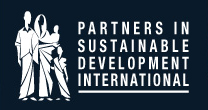Three Humanitarian Crises You Should Know About in 2024
In addition to the continued eradication of extreme poverty in Bangladesh, Sudan, Haiti, and Congo need our attention. These three crises increased in severity over the past year, and merit a robust response from the world’s humanitarians. We share this article from the CARE staff from late December, 2023.
1. Sudan: the largest displacement crisis in the world
More than six million people have been displaced within and outside Sudan seeking safety since fighting between armed groups erupted in mid-April 2023. The conflict in Sudan, which started on April 15, sparked a significant influx of refugees to Chad.
A least 1.2 million people have fled Sudan since mid-April seeking safety and protection in neighboring countries. Sudan is now the largest child displacement crisis in the world, with three million children fleeing widespread violence.
According to the UN Office for the Coordination of Humanitarian Affairs (OCHA), there are significant concerns about women and girls being abducted, forcibly married, and held for ransom. In addition, Sudan is one of the top four hotspots of highest concern for food insecurity according to the UN Food and Agriculture Organization and the World Food Program.
Numbers we can’t ignore
7 million people now require humanitarian aid and protection.
42 percent of the population face severe food insecurity.
19 million children are out of school.
75 percent of those displaced are women and girls, facing high risk of gender-based violence and forced marriage.
2. Haiti: violent gangs are crippling the country
It is estimated that over 200 gangs currently operate throughout Haiti, and the largest groups control up to 80 percent of Port-au-Prince, leading to alarming numbers of violence, injuries, kidnappings, and killings.
Haiti’s humanitarian crisis is complex, with socio-political unrest, power supply issues and fuel blockages that significantly constrain the operation of health services and hinder the provision of humanitarian assistance by international organizations and partners. Demonstrations blocking roads and the lack of fuel have slowed the operation of health facilities.
The disruption of economic activities in the country has exacerbated poverty and made access to basic health services difficult. Even when these vulnerable groups do manage to access health services, they are often confronted with health facilities that lack essential equipment and medicines, or with a shortage of qualified medical staff, and emergency services that are not available to them.
Access to health services, for both caregivers and patients, remains extremely difficult, as some physicians in the capital can testify, declaring that patients, in addition to being ill, face great challenges in getting to treatment centers and accessing care. They are limited by the price of care and the cost of transport, which continues to rise.
Numbers we can’t ignore
3 million people are in a food crisis, 38 percent of the population.
5 million people require health assistance as the country battles an ongoing and dangerous cholera outbreak.
195,000 people are internally displaced.
3. Democratic Republic of Congo (DRC): One of the most complex humanitarian crises in the world
DRC has been scarred by decades of clashes between armed groups over territory, natural resources, and influence. This has led to widespread violations of human rights, including extrajudicial killings by security forces, and devastating incidents of gender-based violence.
Today, this has resulted in unprecedented levels of protection needs, vulnerabilities and risks, displacing 6.1 million people within the country and forcing 1 million to seek asylum across Africa. At the same time, the DRC hosts more than half a million refugees from neighboring countries.
Moreover, in recent years, DRC faced numerous deadly epidemics including 15 Ebola outbreaks, malaria, cholera, bubonic plague, yellow fever, and measles. Millions of lives have been lost and many more affected.
“Eastern DRC has become one of the most dangerous places in the world for women and children,” said Sidibe Kadidia, Country Director, CARE DRC.
“Maternal and child health remains a critical issue. Access to proper maternal healthcare services, including skilled birth attendants and necessary facilities, is still a challenge in many regions, leading to high maternal and infant mortality rates. As primary caregivers, women are more susceptible to contracting diseases and fall ill when taking care of family members.”
Numbers we can’t ignore
39 percent of girls will be married before reaching 18 years of age.
52 percent of women will face sexual and gender-based violence in their lifetimes.
9 million people do not have access to adequate health services.
We are grateful for the support PSDI has received to eradicate poverty in Bangladesh, where at one time, the need there was as great as it is in these countries today. Supporting nonprofits that do this incredibly hard work makes a difference. Please help.
